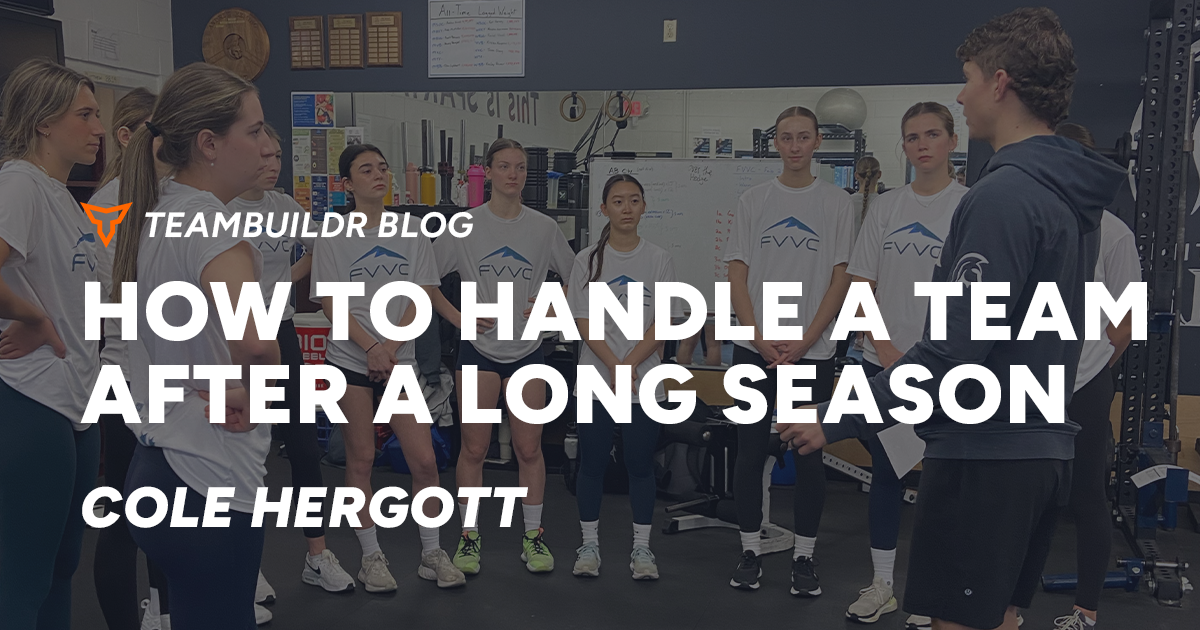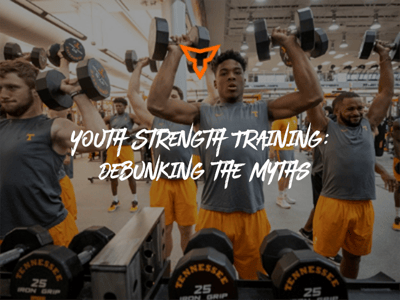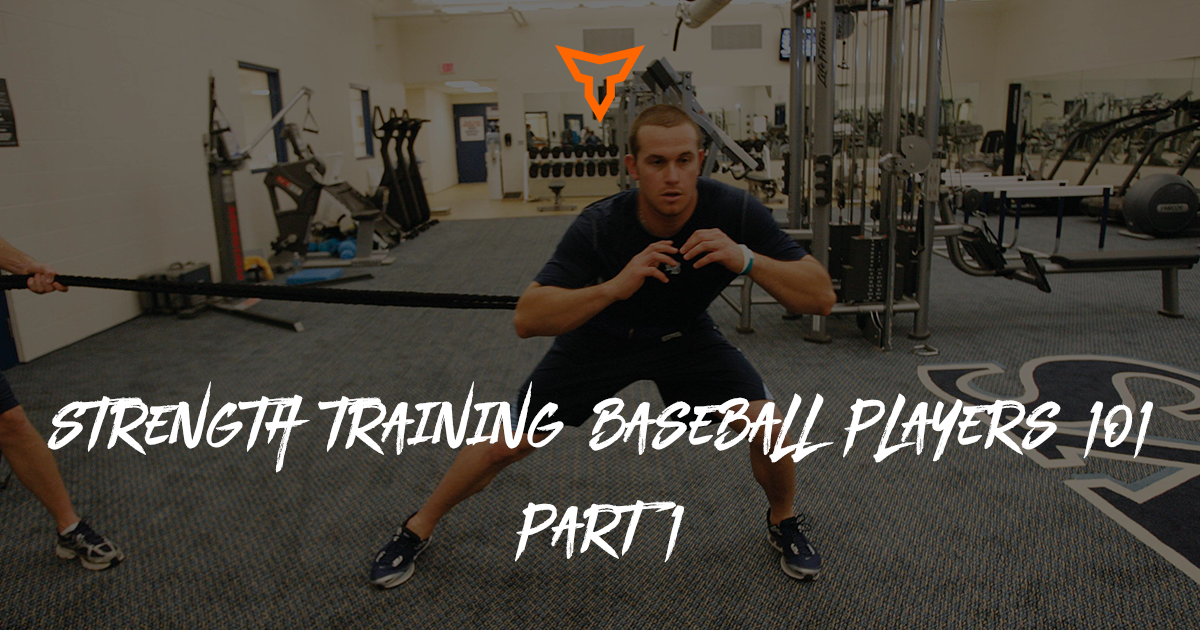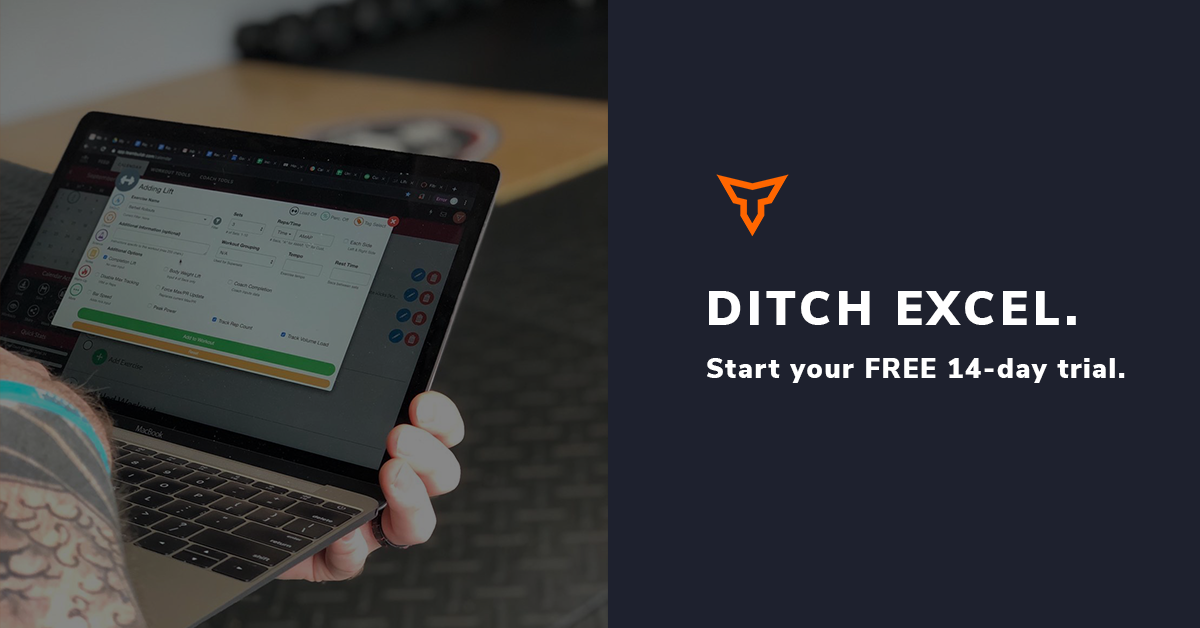How to Safely Use the 1RM Test for Strength Training
I have a dirty little secret. It’s a doozy. It’s crazy. It’s controversial. Here it goes:
I let my athletes test their one rep max…
OK, I’m being a little sarcastic. But, it seems like the pendulum sometimes swings to the extremes of of positions in this industry. And if Twitter is any indication, right now the pendulum is swinging towards never performing a 1RM.
I get it too. From a programming standpoint it is not necessary. The internet is also filled with videos of 1RM’s going very, very badly. The numbers athletes test for become obsolete just a few weeks later as they get stronger. So why take the risk?
The Why
A one rep max is absolutely not necessary to run a solid program. I am the first to admit this. I know plenty of incredible coaches that never do it. However, I think throwing something out the window just because others have done it poorly is a mistake. There are several reasons a 1RM can be beneficial to your athletes.
First, there’s the psychological aspect of it. A 1RM gives an athlete the opportunity to work on several sport psychology skills that they rarely get to exhibit during the offseason. Facing a big 1RM is much like facing an opponent. An athlete must manage emotions, anxiety, and fear. A big PR gives an athlete the chance to practice positive mental imagery and self-talk. Hitting a PR also causes a big dopamine hit, which then motivates the athlete to work even harder in the weight room.
A new PR also builds confidence. Think back to the first time you hit a big milestone PR. Maybe a 405 squat or a 315 bench. You start holding yourself differently after that moment. A player who is confident in their strength is a player who is confident in their ability.

Then there’s the physiological aspect. Nothing stimulates and challenges the CNS like a 1RM. It recruits a massive number of motor units. After a 1 RM, heavy weight feels lighter and bars move faster. Hormonally, you increase testosterone production. Sure, you can achieve this with submaximal weights but the effect is greater the closer you get to your 1 RM
The biggest reason that we test the 1RM however, is cultural. The weight room is rarely “fun”. Most days it’s a brutal, boring grind. But if there is one thing all athletes love, its test day. The 1 rep max test gives athletes a goal to work for all off season. Testing gives your team a chance to rally around each other and get excited for others success. Testing builds buy in when your athletes can see the results they are getting.
The real question then becomes why would I take that away from them?
How to Safely Implement a 1RM
The #1 reason 1RM testing is being challenged so often is the safety concern. There are countless videos of athletes squeezing out a max with atrocious form. It’s an epidemic! The problem is that it doesn’t matter if your doing a 1RM, a 3RM, or a rep out max, extreme fatigue occurs. And during extreme fatigue, poorly coached athletes will have bad form. In fact, the longer an athlete exerts themselves at a high intensity the worse their form gets! This means that the danger for technical errors(and injury) actually gets worse when doing repetition maxes.
As a coach it is your job to always stop an athlete when technique falters. Always. If athletes know you are quick to cut off a lift, they’re more likely to focus on technique during big lifts. Never be afraid to tell an athlete to rack it.
Here are several precautions we take to ensure our 1RM testing is safe:
- Don’t test first!
A major problem in traditional testing models is that testing is the very first thing you do in a training cycle. From a programming perspective this makes sense, but from a risk/reward point of view this is problematic. Untrained and untrained athletes shouldn’t test anything that requires technical prowess. We estimate maxes weekly throughout our training cycle so we don’t actually use 1RM data as a percentage foundation. Therefore we only 1RM test at the very END of a training cycle, when our athletes technique and physical preparedness is at its best.
- Use higher percentages year round
Part of the reason I feel comfortable with our athletes 1RM testing is that our athletes train in high percentages year round. We run a wave training model and at least once a week(in and off season) we have a “high intensity” day where we use loads 85%-98%(of our current Emax). We also allow our athletes to “PR” in any of these training sessions given both they and the strength coach agree they should go up. This means that approaching our 1RM isn’t out of the norm for our athletes and they know how to handle heavy loads with confidence.
- Put an upper limit on 1RM testing
I don’t want you to be superman when we test 1RM. At most I want you adding 5-10 lbs over your current Emax. If anything, our 1RM testing is meant to be a realization of what our estimates say we can do. So when we set up our testing sheets, we give our athletes a 1st attempt(95%) and a maximum attempt (105%). Our athletes know that if they want to hit a goal on testing day, then they need to get close to that goal during the training cycle or they won’t be allowed to.
- Teach your athletes how to fail
Train your athletes on what failing a rep properly looks like. Especially on squat and clean. Spotters should know when a rep stalls out to take it earlier rather than later. Coaches should be taught how to shut down a rep where form degrades. These things should be taught whether you are doing a 1 RM or not.
Go big or go home
If you’re going to test, you might as well make a big deal about it. If the reason we 1RM test is to reward the athletes and create buy in, then you can’t just throw together a random 1RM day. You need to make it special.
At the end of our summer program we host an event called “Night of Champions”. We drag our squat racks, benches, Olympic platforms, and a ton of other equipment down to our football field. Then we invite all of our parents, coaches, admin, etc. out to watch our athletes test. Then we announce new PR’s over the loudspeaker throughout the night.
We crank up the tunes, turn on the lights, and watch our athletes show off what they’ve done all summer.
It’s become one of the athletes favorite days of the year. I get questions about Night of Champions all fall and spring. Parents love it because they get to witness first hand the work their sons and daughters are putting in with our training program. Athletes love it because they get public recognition of their accomplishments. All of a sudden offseason feels a little bit more like in season.
The 1RM isn’t for everyone. It definitely has its risks just like anything else we do in training. But to a teenage boy “how much ya bench?” is always going to matter to them. As long as I can safely use that to create “buy in," I’m going to.
Subscribe to our blog
Subscribe to receive the latest blog posts to your inbox every week.
Related posts

How to Handle a Team After A Long Season

Youth Strength Training: Debunking the Myths

